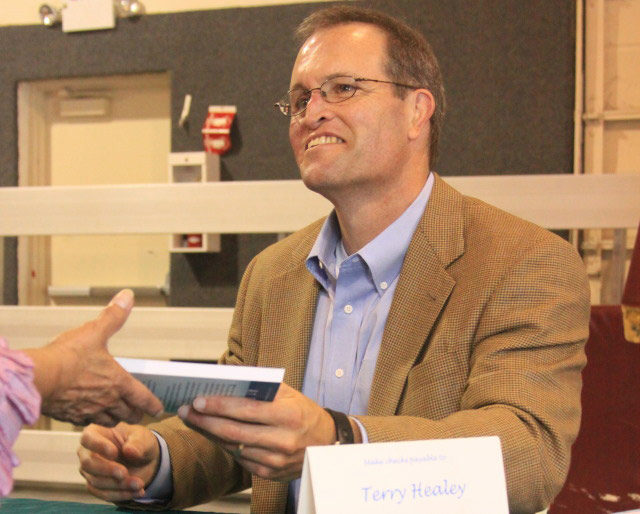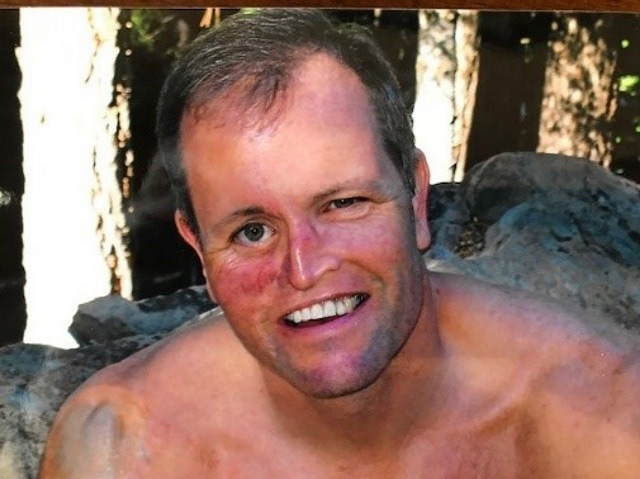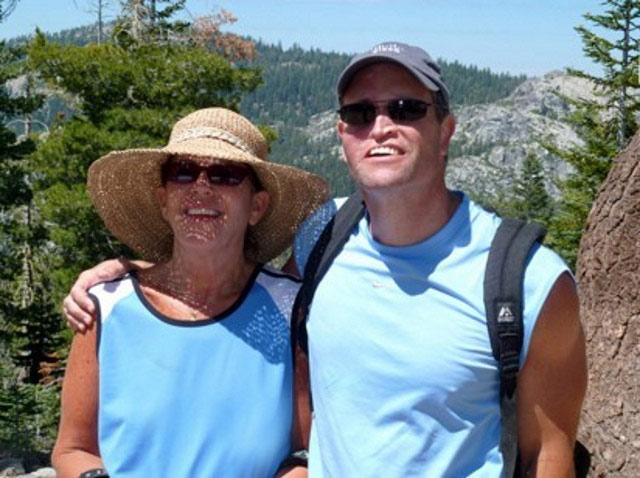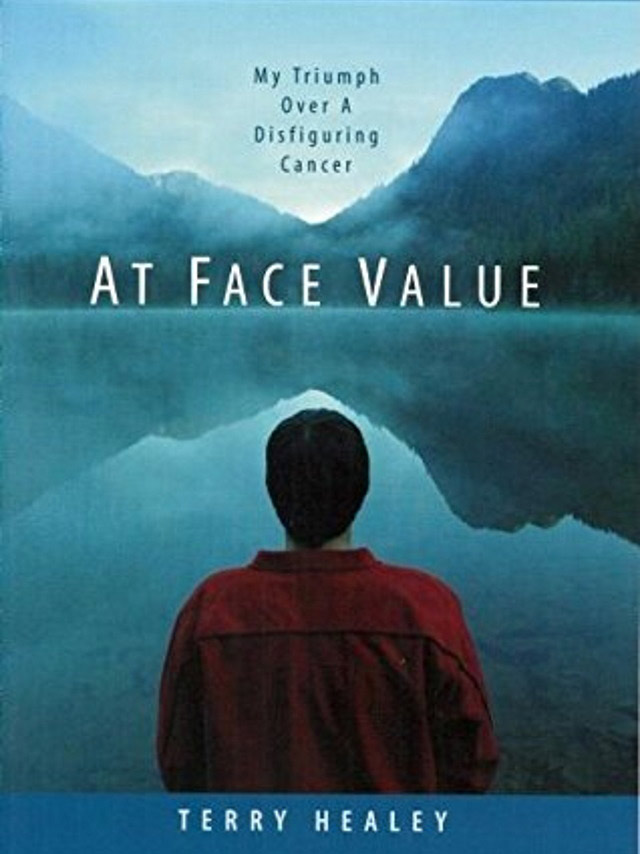2021-July-16
Did you know? You can share this story using the social media icons on the upper left. Use the hashtag #WeAreCisco. You can also rate or comment on the story below.
Beyond Face Value
BY TERRY HEALEY · DIGITAL MARKETING · UNITED STATES
WITH KRYSTAL CHENG

Editor’s Note: The following story involves a discussion about physical disfigurement, which might be upsetting to some readers.
In 1984, at age 20, my life was smooth sailing. I was a junior at the University of California Berkeley, president of my fraternity, and a confident, above-average student.
Many considered me handsome, and a few years earlier in high school, I was even voted the homecoming prince. I was living life on “easy street.”
But that year, several people asked if something was wrong with my nose. My right nostril appeared to be flared out. I eventually noticed a bump pushing against the inside of it. When it didn’t go away, I made an appointment with a doctor.
After initially telling me it was probably a pimple, he suggested a biopsy when it was still there three weeks later.
From “easy street” to “streetable”
It turned out that I had a malignant maxillary tumor, a rare fibrosarcoma.
I would later discover how lucky I was to get the correct diagnosis given how few of these tumors pathologists see.
The bulk of the tumor was removed during the biopsy, but I underwent surgery to excise any remaining tumor cells. Fortunately, the procedure was minor, and after a few sutures, I returned to classes looking like I had been in a fight with someone, not something.
But six months later, I discovered a new lump in the same nostril. Then my cheek began tingling.
Numerous specialists confirmed that my tumor had procreated. Prescribing more surgery, my doctor warned me that I might lose part of my nose and right eye.
His main concern was saving my life. I suppose I was too young to contemplate dying, but the notion of disfigurement was devastating.
I awoke from surgery to find that he had removed not only half my nose but also half of my upper lip, muscle and bone from my right cheek, the shelf of my eye, six teeth, and part of my hard palate.
My doctor promised to make me “streetable,” or publicly acceptable, before I left the hospital. What I didn’t realize then was that this was his way of preparing me for a life of disfigurement.

My hospital room had protected me. Outside of it, I was vulnerable and exposed. Of course, I cared what other people thought of me. I relished the admiring looks the old Terry had received.
Now I was petrified of potential reactions to the new Terry.
During the following months, I encountered many friends whose occasional and inadvertently negative reactions left an indelible mark.
Even worse, radiation treatments were shrinking my facial tissue, magnifying my deformity. My self-esteem sank lower, and I constantly sought reassurance from others: “Do I look okay?” “Is it awkward for you to hang out with me?”
Overcoming emotional scars
Five years and 20 reconstructive surgeries later, I was still plagued with insecurity.
During my last procedure, I met a woman receiving treatment at my hospital. We began dating, but after hearing me ask — for the umpteenth time — how she felt about my looks, she ripped into me.
The bulk of my problem, she informed me, was not my physical appearance but my emotional insecurity.
Her honesty helped me realize that my mental and emotional scars were far more disfiguring than my physical ones.
Once I got over the devastation that she was no longer interested in me, I began to realize how lucky I was that she identified my greatest weakness. With a fresh perspective, I realized that surgery wasn’t something I could control.
What I could control was focusing on rebuilding what was inside.
I began examining myself from the inside out and used prayer and support from loved ones to boost my spirit and self-esteem.
I volunteered at The Wellness Community — now the Cancer Support Community — and discovered that helping others is great therapy. I felt progressively better as I offered inspiration and hope to those coping with cancer.
With time, my emotional pain subsided.

For me, it took something devastating to recognize that battle scars make people interesting and wise. Trauma helps us appreciate life and prepares us for its inevitable adversities.
Today I am thankful for who I am — a much stronger and wiser person than the old Terry.
I am grateful for my experience because I appreciate every day of my life, and I am more forgiving and tolerant than ever before. What I learned I hope to teach others.
Looking back and ahead
I remain cancer-free 36 years after treatment. I rarely notice people pointing or staring at me anymore.
I even met my wife Sue, my spouse of 27 years. On our first date together, she never even asked what had happened to me. She wasn’t concerned about my physical defects but just cared about me as a person.
A lot of people have asked me over the years what sustained me through this ordeal. How did I get through it? Well, I attribute a lot of it to the support of family and friends, to my religious faith that gave me tremendous courage and strength, and to my medical team that consisted of the best and the brightest specialists.
But along with the Cancer Support Community, I began to realize that I needed to have another purpose in my life — one that I could control. And so getting that first real job after I graduated from Cal was significant, because suddenly I had goals, objectives and responsibilities.

Over time, I began to rebuild some of the confidence I’d lost. Eventually, I became a VP of Marketing for two different high tech companies over a six year period. Then I began consulting, and in 2003, I started at Cisco, working in field marketing, and then supporting partner marketing, segment marketing, business development, product marketing, and digital marketing.
With Cisco, I felt like I had found an organization that was not only an innovative high-tech leader, but one that was always very supportive of their people and their passions. I felt like I found the place that I wanted to call home. And never once in all these years have I been treated differently at Cisco for looking “different.” In fact, most people probably have no idea what happened to me because no one asks. I am just one of their colleagues that they treat with the same level of respect they would with anyone else.
Finally feeling like I had a inspiring story to share, I published a book about my triumph called At Face Value and became a motivational speaker, managing to continue to find time to get in front of audiences in large corporations, healthcare organizations, the education sector, associations and non-profits.
I am no longer insecure and have found that speaking about how others can build back their own confidence is the most therapeutic part of my recovery.
I learned a lot at a very young age. I’m grateful for those gifts and lessons that I’ve received in my life. I hope to continue to share them with other people faced with challenges and adversity in their own lives.
Related Links
- Our Impact - CSR & Time2Give
- Careers at Cisco
- For more information about Terry’s speaking events and books, visit his website.
- Contact Terry via Email
Connect everything. Innovate everywhere. Benefit everyone.
Share your thoughts!
Log in to rate and commentShare your thoughts on the story here!